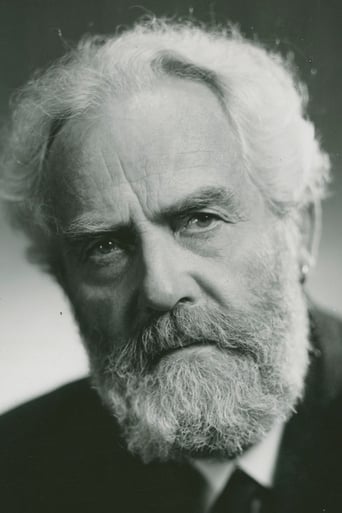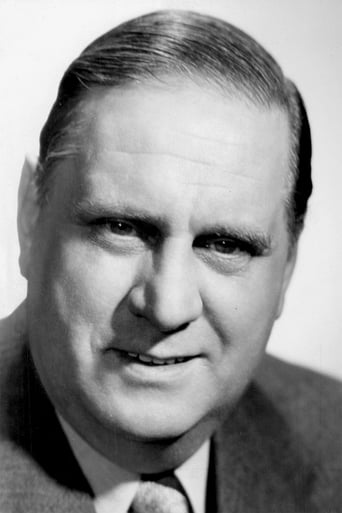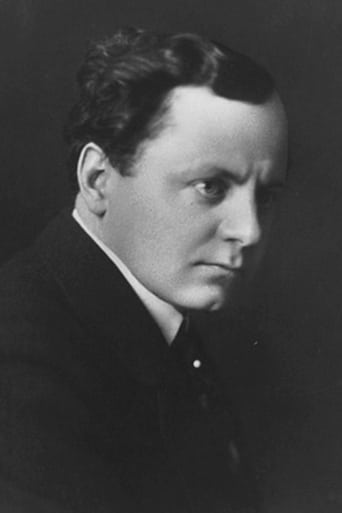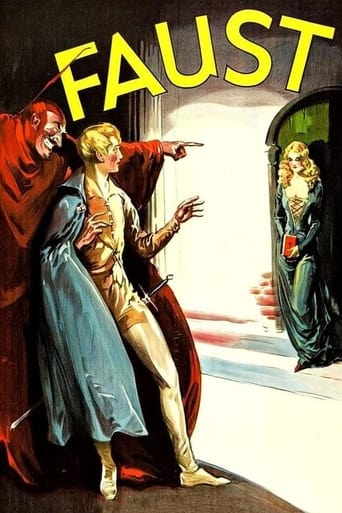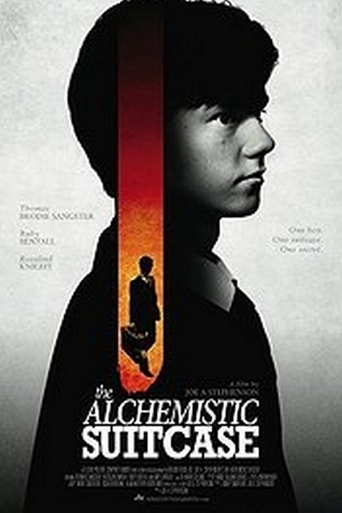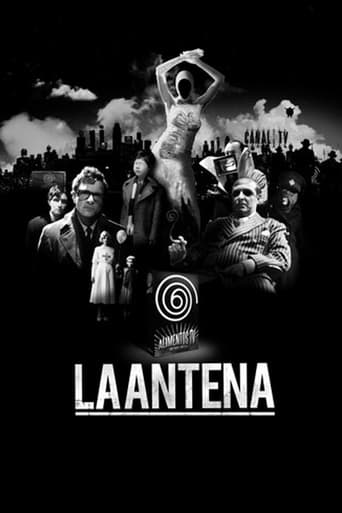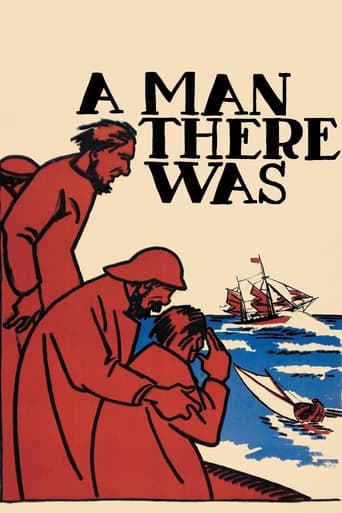
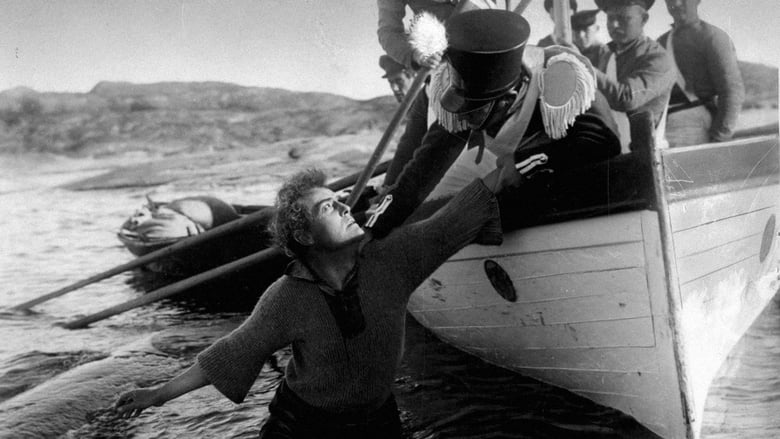
A Man There Was (1917)
Terje Vigen, a sailor, suffers the loss of his family through the inflexibility of another man. Years later, when his enemy's family finds itself dependent on his benevolence, Terje must decide whether to avenge himself.
Watch Trailer
Cast


Similar titles
Reviews
bizarre, lyrical intertitle cards--perhaps in original language it was This silent film might take a bit of getting used to as you watch it. That's because the intertitle cards are written in a very odd and lyrical manner--one that makes reading them a bit difficult at first. It's as if some poet decided to write them. Now I have no idea how close these are to the original cards, as the current copy we have of the film was made from a German print. Were the original cards written like this? And how much was lost in translating it to German and then English?Victor Sjöström starred in and directed this film. Few Americans today would recognize him or his name but some might remember his as the aging professor in Bergman's "Wild Strawberries". However, in the silent days he was a HUGE star--directing and starring in lots and lots of films. A few of them still exist today and the ones I have seen are very well made.This is the story of Terje and it begins around 1810. Sweden and Britain are at war and the British fleet is blockading the coastline. As a result, the common folk are hungry and Terje goes to sea to smuggle in food. However, it's risky business and he's eventually captured. The British Captain is a tough man and has no pity--sending Terje to prison for five years. When he is released and returns home, he learns that his beloved wife and child have died and Terje spends years pining for them. Then, out of the blue, he is handed an opportunity to exact revenge upon the Captain. What's Terje to do? Well, see the film for yourself!All in all, apart from a ridiculously improbable scenario at the end, the film was exceptionally well made and compelling. A very good early silent film and one that fans of the genre should see.
"Terje Vigen" is one of the best films of the 1910s. It's extraordinarily well crafted for 1917, with some brisk, modern editing (e.g. the capture scene) and, especially, outstanding photography throughout. In this respect, the only slight criticism I could give the film is that it's rather short, at about 53 minutes on the Kino DVD; regardless, the pacing is good. The intertitles from Ibsen, despite whatever is lost in translation, I think also add to the film's rhythm and mood.Most of the drama takes place outside, at sea, which avoids some of the dimensional and framing awkwardness, or theatricality, of shooting indoors that so afflicted early filmmakers. Much of it also occurs at night, and the reconstructed blue tinting is very good. Moreover, director Victor Sjöström and cinematographer Julius Jaenzon's photography is not only naturalistic; they make nature into the defining presence of the picture. They do so quite economically, too. Reportedly, the location was less than ideal--settling for the closer and calmer shoreline of Stockholm rather than the real Norwegian island and including in the story a man-o'-war and village, both of which they show very little of. Yet, they didn't need them.Sjöström seems to have been one of the first to make nature a central character in his films in a significant way and returned to the conflict between man and nature in such films as "The Outlaw and His Wife" (1918) and "The Wind" (1928). In "Terje Vigen", it's not only the warship or its commander that challenges and affords him, or provides the plot, but also the stormy waters, the foliage that disguises him and his boat as part of the natural environment, the isolation of the island, the entrapment of the sea. Nature as a catalyst and reflection of the plot and character development become most evident in the film's climax.To top it off, Sjöström plays the lead, Terje Vigen, in a restrained and convincing performance, especially in his transformation from robust youth to embittered and isolated old man. There's no wonder upon seeing these early performances in his own films that later he would so easily fall back upon acting after his directorial career ended. By 1917, however, Yevgeni Bauer and D.W. Griffith were the only two directors to my knowledge to display such mastery, although for very different uses, of the art form.
Victor Sjöström is perhaps best known as a director for the two silent features he made in America with Lillian Gish, The Scarlet Letter (1926) and The Wind (1928); as an actor, he is surely best remembered for his deeply moving performance as the aging professor in Ingmar Bergman's Wild Strawberries, made in 1957 when he was 78 years old. But the recent recovery of a strikingly well-preserved, tinted print of one of Sjöström's early works produced in his native Sweden should give his reputation a fresh boost and firmly re-establish his place as one of the great directors of the cinema's first generation, alongside D.W. Griffith, Maurice Tourneur, and Erich Von Stroheim. 'Terje Vigen,' based on a poem by Henrik Ibsen, is a remarkably sophisticated film of great beauty, a tragic tale with an ending that is unexpectedly uplifting. I can't recall any other movie I've seen that tells such a sad story and nonetheless left me feeling so exhilarated at the finale.This project marked a personal and professional milestone for the director. A former stage actor, Sjöström made his movie debut as a performer in 1912 at a studio called Svenska Biografteatern and began directing films for the company soon afterward, but in later years he asserted that most of his early efforts were vulgar and conventional. By the summer of 1916 he was at a low-point, unhappy about his career and the recent failure of his marriage. When producer Charles Magnusson suggested he adapt Ibsen's epic poem "Terje Vigen" Sjöström was skeptical of its potential as screen material, that is, until a bicycle trip to the Grimstad coast, where the poem is set, changed his mind. For financial reasons the filming took place on the sea shore near Stockholm rather than Grimstad, but the director took full advantage of his location's rocky coast and crashing waves, making the landscape an integral part of his film. When the lead actor originally slated to play Terje Vigen dropped out Sjöström took the role himself, and thus put his personal stamp on the finished product. He gave a measured yet intense performance in the title role and appeared in practically every scene.The story is set in the early 19th century and may remind some viewers of the tale of Enoch Arden (which had supplied the plot of one of D.W. Griffith's strongest Biograph dramas in 1911). Terje Vigen is a fisherman who quits the seafaring life to marry and start a family in Grimstad, a coastal village. But the Napoleonic wars sweep Europe, and when the British navy sets up a blockade of his island the threat of starvation becomes a grim reality. Rather than see his wife and daughter starve, Terje attempts to run the blockade and return with food. He almost succeeds, but the British spot him in his small boat, give chase, and eventually catch him. Dragged onto the deck of the British frigate he begs for mercy, but the Captain coldly ignores his pleas and has him imprisoned. Five years later Terje is released and returns to his village to find strangers living in his home: his wife and daughter died of starvation. Years pass, and Terje dreams only of vengeance. When a yacht founders off the coast he rescues the owner with his wife and child, and recognizes him as the British captain who denied him mercy years earlier. Terje has it within his power to kill all three, but the sight of the child restores his humanity. He spares them, and his desire for vengeance is conquered.The first thing you notice about this film is that the seaside landscapes are thrilling. The cinematography is excellent throughout, but 'Terje Vigen' is more than just a series of beautiful images. Sjöström's Terje is a strong and dignified protagonist. In a role that could easily have lent itself to eye-rolling histrionics the director did not permit himself to overact, and he set the tone for the other performers: there isn't a single false moment from anyone. Sjöström's directorial technique is especially impressive during the emotional high point, Terje's frantic attempt to escape the British sailors in his boat. It's startling to find a sequence like this one in such an early feature: the director puts the viewer squarely in the midst of the action by alternately placing his camera in each of the boats. He cuts back and forth between shots of Terje's arms furiously rowing and shots of the uniformed British sailors coolly coordinating their pursuit. The camera rocks with the ocean, the tempo of the editing accelerates, and the suspense builds sharply. It's an amazing sequence, especially coming after the stately, melancholy introductory scenes on shore. The sea chase also features the only moment of humor, when Terje briefly believes that he's eluded his pursuers, and "cocks a snook" at them (i.e. puts his thumb to his nose and waggles his fingers). But his triumph is short-lived.The story is a tragedy, but Terje's climactic change of heart is what makes this film a surprisingly uplifting experience. After reading a synopsis of the plot I confess I sat down to watch the film expecting it to be gloomy and depressing, but instead found an exciting, expertly-handled work of silent cinema that left me buzzing. Apparently 'Terje Vigen' marked Victor Sjöström's first international success, popular not only in Sweden and throughout Europe but also in the U.S., Latin America and Asia; fully ninety years after it was produced I can understand why.
If this movie had been made in 1923, I'd have been more blasé, but for 1916 it's nothing short of miraculous.The open-air filming is smooth and well-executed. The emotional rawness is hit hard but never gets overheated. The acting is intense but does not stray into laughable "stagger-and-clutch." Dutiful fidelity to Ibsen's poem may cramp the subtitles, but never interferes with masterful story-telling in the film itself.There is one sequence, in which a launch from a British warship destroys a fisherman's rowboat and then attempts to hunt down the fisherman while he's swimming for his life underwater, that is an absolute classic that will live in your memory.This film is short, but very powerful, and worth going the extra mile to see.


